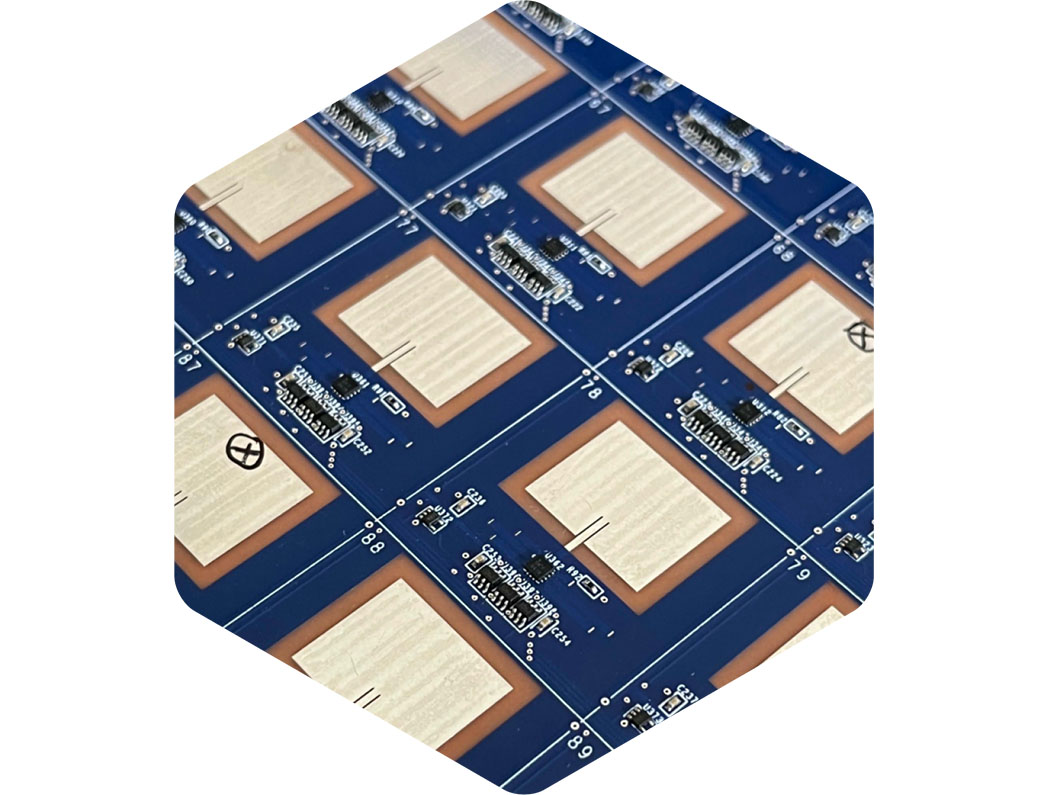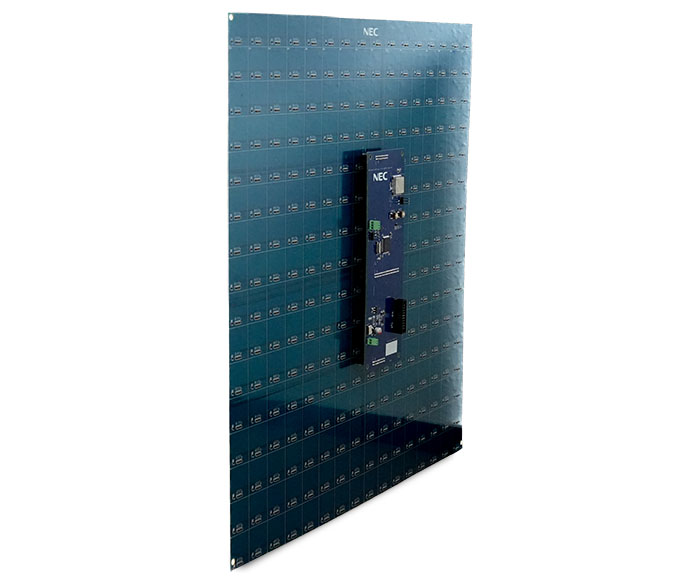Get a prototype and
start manipulating radio frequency propagation
Location tracking of autonomously guided vehicles has become a critical component for smart factories. With near-passive surfaces you can enable location tracking the intelligent way.
How we manipulate
radio signal propagation
Our RIS prototype consists of 100 patch antennas in a 10 ×10 grid of unit cells (each with one antenna), implemented with printed circuit board (PCB) technology on a board with a thickness of 0.6 mm.
The antennas are separated by a distance equal to λ/2, both horizontally and vertically, with λ being the wavelength of the supported carrier signals. The operating frequency of the RIS is 5.3 GHz and thanks to 3-bits delay lines based phase shifter, 7 different phase shifts equally spaced between 0°and 360°can be chosen for every unit cell. The 8th state is dedicated to the absorption mode which each redirects the incoming signal through a 50 Ω resistor that will dissipate the incoming signal.
The RIS is designed to be a modular device. This means that multiple RIS boards can be connected together, thus creating a larger RIS, while still respecting the λ/2 inter-element distance even between cross-board elements.


Here’s how
it works
Reconfigurable Intelligent Surfaces (RIS) turns the classical propagation paradigm into a smart and controllable radio environment.
High performance: RIS can programmatically enable passive beamforming gains without the need for expensive and energy-consuming baseband processors or signal amplifiers.
Control: Our RIS board is composed of multiple cells that are reflecting the incoming signal waves adding a predefined phase delay by exploiting constructive interferences while nulling the emitted power towards undesired directions.
Sustainability: The intended reflection process does not involve active components (such as amplifiers, demodulators, etc.) resulting in a very-limited energy consumption.
What
you’ll get
- Our RIS prototype consisting of 100 patch antennas in a 10 ×10 grid
- A driver board
- An USB to RS485 adapter
- A Python library for easy programming